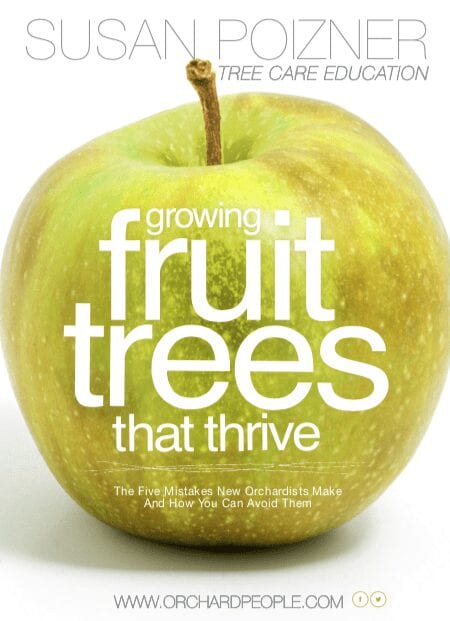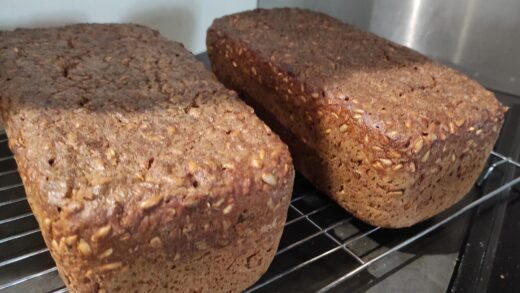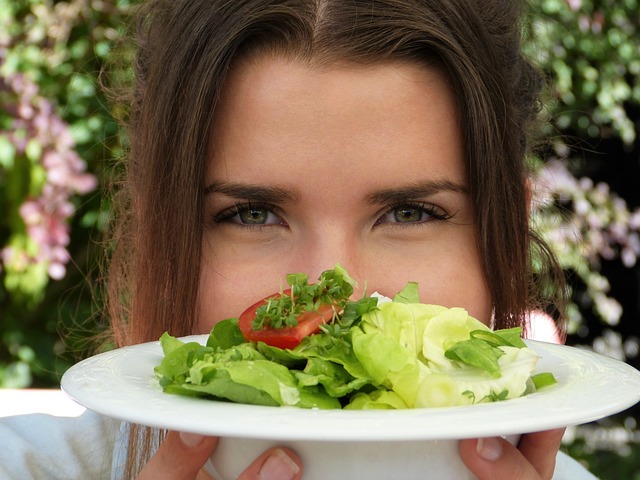
why restore old fruit trees?

Old fruit trees can be a precious resource. As well as providing food and habitat for beneficial insects, birds and other wildlife, well-cared-for old fruit trees can produce plenty of delicious fruit!
In contrast, neglected old fruit trees are often overgrown, more susceptible to disease (so also more likely to spread disease) and aren’t able to produce a quality harvest. But if you have an old fruit tree, don’t despair! Most of these trees can be restored to healthy, fruit-bearing glory if just given some TLC and time.
Barb Burrill, Director of Orchard Stewardship for the fruit harvesting project City Fruit Seattle has launched a number of initiatives aimed at giving the old fruit trees in Seattle the hands-on care needed to improve their health and harvest. In this article, we will explore City Fruit Seattle’s multi-pronged approach to restoring old fruit trees.
how barb burril got involved in restoring old orchards
In 2008, Burril regularly walked her young son to school along the Burke-Gilman Trail in Seattle. One spring day, Burrill noticed a few blossoming apple trees along the trail – but they were surrounded by ivy, blackberries, and English laurel. She realized that this was an old orchard. So, on her walks home from the school, she began to clear a little away at a time, “just for something to do”.
For a few years, Barb continued to informally clear away the plants that crowded the fruit trees. Then, when she became involved with City Fruit Seattle, she and their staff developed a strategy for restoring old fruit trees, like the ones Burril had discovered.
Through the City Fruit organization, Burrill formed the Burke-Gilman Trail Urban Orchard Stewards, a volunteer group dedicated to keeping the trail’s fruit trees healthy.
Many of this trail’s fruit trees were planted by chance, as the trail was once a railway. Perhaps somebody threw away an apple core one day, and a seed took root and grew into one of these trees. Or maybe an animal carried a crab apple from somewhere else, and left its remains in the trail.
Regardless of how they got there, the trees were left to fend for themselves against everything urban nature could throw at them. They were neglected, left unpruned and crowded in by invasive ivy and untamed shrubs. That is, until Burrill came along and gave these old fruit trees a new lease on life.
three steps to restoring old fruit trees
The Burke-Gilman Trail Urban Orchard Stewards have developed three steps to restoring old orchards. They are:
- Clearing away invasive plants
- Restoring the soil
- Pruning the old trees
Let’s explore each step.

Step 1: Clear away invasive plants
The Burke-Gilman Trail fruit trees were unable to thrive because the area was overgrown with weeds. There were also lots of Himalayan blackberry plants, an invasive species in the region. Overgrown weeds and invasive plants are a common problem in neglected orchards, as they compete with the trees for light, water, and nutrition.
It took quite a while for Burrill and her group to clear out the trail to their satisfaction. Himalayan blackberries have dense root balls, and the plants along the trail had a long time to grow wild. Some root balls could be bigger than a person’s fist, and required a specialized “weed wrench” tool. While all revival projects are different, having the right tools for the job is critical.

step 2: restoring the soil
After removing the uncontrolled neighbouring plants that were choking the old fruit trees, Burrill took to restoring the soil. It had been depleted over the years by the many competing plants.
One of the most effective ways to restore the soil around old fruit trees is mulching. Good quality mulches will slowly break down and add nutrients to the soil, while preventing weed growth and holding moisture in the soil. There are many different mulches for fruit trees, but Burrill acquired “natural compost” from the Woodland Park Zoo.
The zoo’s compost was a mix of composted manure and used bedding of the various herbivorous animals. The zoo donates its “Zoo-Doo” to the project twice a year, and the team layers out some of this nutrient rich compost around each tree in the spring and autumn. Then they cover the compost with a layer of wood chip mulch.

Fruit Tree Care Newsletter
Sign up for our monthly newsletter and we will send you our eBook “Growing Fruit Trees That Thrive.” You can unsubscribe at any time.
step 3: pruning the old fruit trees
Once you’ve dealt with plant competition and mulched around the trees, the next step is to prune. Pruning old fruit trees is not difficult and it’s essential to improve the tree’s health. Correct fruit tree pruning helps prevent pest and disease pressures and improves the quality of the fruit.
Many of the fruit trees Barb Burhill hoped to restore had never been pruned. Fruit trees that are neglected like this often develop multiple trunks and/or incredibly dense canopies.
So, when you’re pruning old fruit trees, the priority is to open up the canopy to let fresh air and sunlight reach all the branches. Take care to cut away dead and diseased branches when you find them, and try to shape the tree around its strongest and most well-developed limbs.
To minimize the stress put on the tree, the team never prunes off more than 20 percent of a tree’s canopy in a single year. And using proper pruning cuts and well maintained tools will help ensure the tree isn’t inadvertently damaged.
What restored old fruit trees look like
You can see the difference once the City Fruit team finishes restoring old fruit trees. Instead of being bushy and crowded, the fruit trees look beautiful. They have an open canopy: air can easily pass through and the branches have full access to sunshine.
The following two images show one fruit tree before and after the team did their restorative work. In the first image the shrubby mess of competing plants completely hides the Red Delicious apple tree. Once those shrubs were cleared, voila, there’s actually a tree there!
Now, with access to sunshine, that tree has a new lease on life and will hopefully thrive for many years to come.


Today, City Fruit Seattle’s effort in clearing the competing plants, restoring the soil and pruning old fruit trees has resulted in thriving, healthy trees along the Burke-Gilman trail. Passers-by are welcome to harvest and enjoy the fruit when it’s ready.
Restoring old fruit trees – especially if they’ve been neglected for many years – can take a lot of time and effort. But it’s worth it: the trees will be healthier and stronger and best of all, for those who love free, organic fruit, their fruit will look and taste better too.
To learn about how to care for fruit trees of any age, read Susan Poizner’s award-wining fruit tree care book Growing Urban Orchards or check out OrchardPeople.com’s online fruit tree care training courses by clicking the button below.To listen to Barb talk about the project, you can watch the webinar below produced by the Community Orchard Network.

Kameron Chausse
Intern at OrchardPeople.com.
Kameron Chausse is a Windsor, Ontario based writer and student at St Clair College. He is currently an intern for the fruit tree care education website www.orchardpeople.com.
#Restoring #Fruit #Trees #City #Fruit #Seattle




